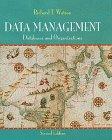

a. A local vineyard owner has commissioned you to investigate how an Intemet of Things (loT) sensor network can effectively monitor various battery-powered environmental sensors, to help improve the quantity and quality of the grapes produced. The sensors can measure temperature, wind speed, rainfall, humidity, soil conditions and sunshine. They can also monitor equipment such as the irrigation system. The owner wants to use the loT network to transmit and store various sensor measurements on a server located in the vineyard office. The specification includes a requirement for the sensors to have: very long battery lives; low transmission data rates, with a maximum bitrate of 6Kbits per day; and sufficient radio range to cover all vines, which can be located up to 1.75km from the vineyard office. Based on what you have learnt in Block 3 , Parts 3 and 4 , write a short comparison, for the vineyard owner, of the relevant features and technical performance of the following three loT network options: Wi-Fi (IEEE 802.11), LPWAN and ZigBee. Your comparison, which must NOT be a table, should reflect on the respective battery life performance, data rates and radio coverage of the three loT technologies and their suitability for this vineyard scenario. It should also conclude with your recommendation of which loT technology to use. The maximum word limit is 350 words. (15 marks) 9 marks for the comparison of the three lot technologies in terms of the features and criteria mentioned above. 4 marks for the overall quality of writing and insightfulness of the narrative. 2 marks for a clear recommendation. b. A mobile base station (BS) in an urban environment has a power measurement of 25W at 325m. If the propagation follows an inverse 4th power law (Section 3.2.2 ), what is a reasonable power value, in W, to assume 1.3km from the BS? Give your answer in scientific notation to two decimal places. (5 marks) c. An analogue sensor has a bandwidth which extends from very low frequencies up to 8.75kHz. Using the Sampling Theorem (Section 3.3.1), what is the minimum sampling rate (number of samples per second) required to convert the sensor output signal into a digital representation without incurring any aliasing? If each sample is now quantised into 512 levels, what will be the resulting sensor output bitrate in kbps? Give your answer in scientific notation to one decimal place. Hint: you need to determine the number of bits per sample that allows for 512 quantisation levels (see Sections 2.4 (Block 1) and 3.3.2 (Block 3)). (5 marks) d. The received 75 message block shown below uses odd parity checks, with the parity bits displayed at the end of each row (A-E) and column (1-7) in the shaded cells (see Section 3.7.1). A single bit error has occurred somewhere in this message block. By checking each row and column, determine the following: i. The row-column grid reference of the bit error. ii. What change needs to be made to correct the error? As part of your answer, briefly explain how you located the bit error








